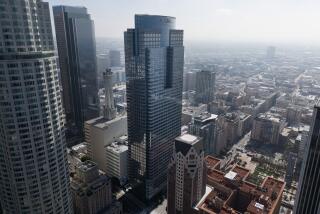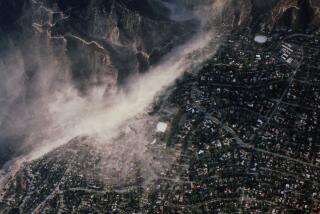An Underground Connection
When developers worry about treading on shaky or shifty ground, they call on their best connection to the underground--someone like LeRoy Crandall.
Lest this remark be misleading, Crandall’s expertise lies in providing information to clients that is essential to establishing a solid foundation for their buildings.
What it amounts to is a highly specialized task, labeled geotechnical engineering, that has to do with identifying a wide range of soil characteristics and predicting ground motion of specific sites in relation to earthquake activity.
Crandall, a jovial individual with an enviable list of major project credits, enjoys sharing an incident which he swears took place.
“Many years ago, our profession was known simply as foundation engineering. One day, a lady called our office to set up an appointment for a foundation fitting--a tempting assignment we had to decline.”
LeRoy Crandall & Associates has been doing soil engineering for every high-rise building (except three) constructed in downtown Los Angeles in the past 30 years. In addition, the firm has also done it for all the major buildings in Century City.
What better source to clue us in on what’s down under downtown!
“Most structures are built on that part of the earth that consists of layer upon layer of sand, gravel, clay, water, siltstone and, below that, bedrock-- the best material on which to build, providing there are no caverns in it.”
It’s comforting to know that Times-Mirror Square is built over good sand and gravel deposits, and that the shales and siltstone under Bunker Hill are good stuff, as well.
The popular belief that there are running streams underground and shallow water tables around the City Hall area, is “pure myth,” according to Crandall. He explained that the water level downtown is at a significant depth (more than 100 feet) and that all high-rise excavations are done in essentially dry conditions with no problems from ground water. Beverly Hills, on the other hand, has a considerable underground water problem, he added.
Summing up his work, Crandall said: “It’s not what you might call glamorous, because no one ever sees what we do.” But it does have its rewards, he added.
“Sometimes we come across fascinating archaeological finds, such as a 2-million-year-old hard-rock sea shell deposit discovered after we probed 150 feet below where the Arco Towers stand today. We’ve also found 200-year-old relics of early Los Angeles settlers in digging a building foundation near Olvera Street.
“The main satisfaction, however, comes in knowing that a project behaves as it should, because we said it would,” Crandall noted.
More to Read
Sign up for Essential California
The most important California stories and recommendations in your inbox every morning.
You may occasionally receive promotional content from the Los Angeles Times.






